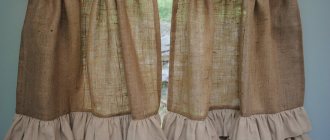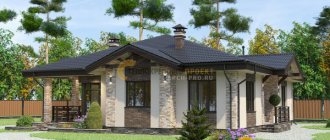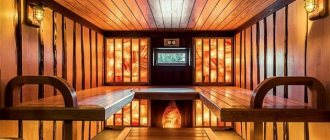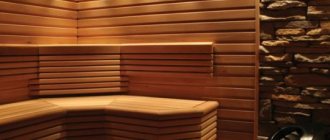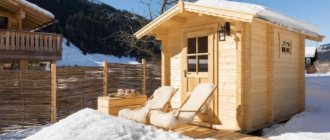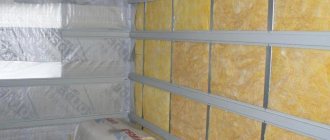Within the baths, one of the most important rooms is the steam room. It is not only necessary to create a suitable temperature and atmosphere, but the aesthetic appearance is important. After all, a beautifully decorated room will please the eye and make spending time more enjoyable. Let's consider what materials professionals recommend to make the steam room comfortable and look beautiful.
Photos of our baths Photos of our saunas Find out the cost
Choice of finishing material
Traditionally, wooden finishing is used for bathhouses; this choice of bathhouse finishing material is ideal because it simultaneously creates an attractive appearance and maintains a comfortable and healthy atmosphere indoors. Wood also retains heat efficiently. However, there are many wood options, which is why choosing remains a difficult task.
For baths, different types of wood can be used, but not all options are good as cladding. It is not recommended to choose coniferous wood, since the room heats up. Softwood trim may release resin. For this reason, aspen, linden, linden or alder are much better suited. Many people like the pine aroma during bathing procedures; in this case, you can choose cedar; the finish will not release resin, while cedar is durable and smells pleasant.
Washing room
The washing machine may be different. If water is supplied to the bathhouse from a centralized network or a well with a pump, and there is a water heater, it is enough to install a shower stall or simply equip a shower corner.
This is impossible without running water, so benches and watering cans are needed. Often both are found, complemented by a large plunge pool or even a swimming pool. And also washing rooms combined with a steam room.
In each case, the interior decoration of a wooden bath will be different:
- For the common room, all the materials described in the previous chapter are used. This is a wood that can withstand intense heat on walls and ceilings and tiled or concrete floors with drains.
- In the washroom, which is separated from the steam room and does not have a shower, any wood can be used to decorate the walls, except birch . Including coniferous ones. Here the temperature is not so high, so the resin is unlikely to flow. But the air will be filled with a pleasant aroma.
Ladders or rubber mats are absolutely necessary here, since tiled floors in the washroom become slippery from soapy water
- Finishing a shower in a wooden bath can also be done with clapboard, but in this case you need good supply and exhaust ventilation so that the boards dry after the procedures are completed. They must be treated with a moisture-repellent agent and the coating must be renewed periodically.
The result of poor ventilation and non-compliance with finishing technology
Shower and sprinkling device in the washing room
- It will be much more durable to cover the walls with tiles or stone at least one and a half meters from the floor. If the load-bearing walls are wooden, they are waterproofed, covered with moisture-resistant plasterboard, and tiles are glued onto it.
Full height tiling in washroom
Combined finishing in a combined sink
- A very convenient option is a shower room with a door or curtain. It can be arranged in a dead end or fenced off a corner with a partition. And there will be no questions about how to decorate the walls in the washing room: with tiles. And the rest of the space, where there will be no heat, no high humidity, whatever.
Entrance to the steam room and washing room from the relaxation room
- It’s even easier to install a ready-made shower stall, and then you don’t have to worry too much about wall cladding; plastic panels will do. In this case, finishing materials are selected in the same way as for a bathroom in an apartment.
Shower stall in the bathhouse
The ceiling here can be plastered and covered with moisture-resistant paint that is resistant to washing. But if you regularly use the bathhouse, you will need to update the coating at least once every two years.
Such types of finishing as wooden and plastic lining, slatted or suspended ceilings are also quite acceptable. They are not afraid of moisture, spotlights can be built into them, and the space between the ceiling and the cladding can be filled with thermal insulation.
The suspended ceiling must have a ventilation grill to prevent condensation from accumulating on its reverse side
If the bathhouse is wooden, built from ordinary logs or timber, finishing can begin no earlier than in a year . Because it will settle as the wood shrinks, deforming the cladding.
If you don’t want to wait, you can bother with a floating frame for drywall and tiles. How to do this correctly is described in the article “Facing a wooden house with plasterboard.” And unlined walls must be treated with a natural-based antifungal antiseptic impregnation.
Requirements for the material for covering the steam room
If it is necessary to carry out cladding, a number of nuances should be taken into account:
- the wood should dry quickly and easily withstand exposure to moisture, in which case damage from rotting can be avoided;
- the resin level should be close to zero, ideally the material should not contain resin;
- it is necessary to use surfaces without knots, roughness, or gaps; here, smoothness and absence of irregularities are required;
- A coating with low thermal conductivity is required, otherwise after strong heating in the steam room, you can burn the skin.
When choosing a tree, you can consider linden; the best option is to install lining from this type of wood. The material for covering the inside should be selected in advance, even before construction begins. For example, linden is easy to process, has a low level of thermal conductivity, and releases essential oils that are good for health.
Aspen may be a good option; it is often recommended by experts, since the tree has a number of useful qualities and has a long service life. Aspen also has an affordable price.
Linden fits well into the interior of the steam room, it is very dense, has a positive effect on health, and does not absorb moisture. The material is durable and has a required low thermal conductivity. This makes the type of wood suitable for decorating baths.
The tree is the head of everything
The steam room, let us not be afraid of this pompous phrase, is the heart of a real Russian bath, so decorating the steam room is a very delicate matter, requiring thoughts in the head and skill in the hands. In a Russian steam room, the tree rules the roost and there are many reasons for this:
- Certain types of wood have an optimal ratio of thermal conductivity and heat capacity, which allows, on the one hand, to accumulate and release a significant amount of thermal energy, and on the other hand, not to cause burns to exposed parts of the human body;
- Wood, due to its structure, seems to “breathe”, that is, local gas exchange occurs, which is a very useful quality in conditions of high temperature and humidity;
- Based on the previous point, as a result of local gas exchange, the lining of the steam room works as a kind of generator of odors and aromas, which, in addition to creating a comfortable atmosphere, also causes a certain therapeutic inhalation effect;
- In our country, wood is a fairly affordable option, at least definitely more affordable than the same marble slabs;
- Decorating a steam room in a bathhouse with your own hands does not pose any special problems and is accessible to a person without specific carpentry skills;
- Properly selected types of wood are durable, even in unfavorable conditions of the steam room.
It is clear that it is possible and necessary to use combined types of finishing, when wood is combined with stone, salt blocks and slabs, and marble inserts. However, it is the tree in the Russian steam room that is the core around which the entire decoration of the steam room is tied.
Interior arrangement of the steam room
For a comfortable arrangement, you need to design headrests, shelves, and benches. They have a fairly simple design, but it is better to entrust the work to a master. The reason is the need to comply with certain rules and high-quality finishing of the bath. For furniture in bathhouses, professionals use the same type of wood that was chosen for the steam room.
In addition to the classic options, African oak (abashi) is common; the material has the following features:
- resistance to moisture;
- long service life;
- high level of density;
- strength;
- low thermal conductivity;
- resistance to deformation;
- the surface is pleasant to the touch.
However, abashi is quite expensive, for this reason it is not available to everyone.
Why is steam harmful?
The interior decoration of the steam room also has a number of objective contraindications. What conflicts with steam and why:
- Fiberboard and particle boards. Finishing a Russian steam bath even with waterproof materials of this group is excluded due to the use of phenolic resins in their production, which under conditions of high humidity and temperature can provoke the infiltration of harmful components and cause them to enter the atmosphere of the steam room;
- Plastics. For approximately the same reason, the use of plastic is not recommended for finishing not only a steam room, but also the internal volumes associated with it. In addition, plastic products are unsafe in terms of flammability;
- Artificial stone for steam rooms also has a number of limitations. This is due to the use of modifiers and pigments for their production. In addition, such materials have high water absorption, which is offset by the use of protective coatings based on polyurethane resins. Such a decision will also not add health to steamers;
- Pine and spruce lining with a large number of “resin pockets”.
Recommendations for finishing the steam room
When sheathing walls with clapboard, the master can perform both horizontal and vertical fastening. When choosing horizontal laying, the master will begin decorating from the bottom, moving upward. This sequence of arrangement will affect the prevention of moisture penetration between the joints.
Initially, vertically located racks are installed, the insulating material will be located between them. This operation requires marking; a specialist performs it from the corner area. A distance of 59 cm is maintained between the inner sides of the racks. It is this step that will allow the correct installation of insulating material with a suitable thickness.
When lining bathhouses with a log base, there are certain subtleties of work. Fastening in a vertical position is very complicated, for this reason it is highly not recommended to do the work yourself. To achieve quality fastening and an aesthetic appearance, it is necessary to perform special processing of the logs that are turned towards the vertical posts.
For this purpose, a special copier is prepared; it is designed in the form of a thin ruler, one of the sides of which is pointed. Also, the entire length of the tool is equipped with holes the diameter of a pencil. The craftsman takes the stand, presses it against the wall surface and uses a copier to draw lines that repeat the configuration of the log house.
Decorating steam rooms requires experience and knowledge of the intricacies; after drawing the lines, it’s time to process the counter. It is necessary to achieve a junction of the rack with a step of 60 cm to the logs, at least in several places. It is very important to keep the level in a vertical position, and the length of the surfaces in the area of connection with the slats should be at least 2-3 cm. In this case, the result will be achieved. Boards for arranging a steam room must be treated using an antiseptic composition.
Next, the master attaches the protective membrane, the operation is performed starting from the bottom and moving upward. The next film is placed with an overlap of 20-30 cm over the previous one. A stapler is used to attach the upper part of the film to the logs. In areas of overlap, you can choose to join with self-adhesive tape or tape.
The racks must be installed strictly according to the markings; it is by their level that the protective coating is compared; a plumb line and a level will help with this. The material is secured to the logs with galvanized nails or screws. Long fasteners are not necessary; the blind hole should be only a few mm larger than the diameter of the screw head.
To facilitate the process of installing internal racks, a specialist uses a rope, pulling it at the top and bottom of the wall. This allows you to achieve an even position of the internal racks. Alignment and tension of the protective film is done in such a way as to avoid air in the spaces between open logs. Negligence at this stage leads to early deformation and rotting of the cladding and the log house itself. As a result, visiting the bathhouse will no longer be useful. During the installation of corner posts, the master will immediately place insulation material.
Drying (drying and ventilation)
A Finnish sauna is not as humidified as a Russian sauna, but it also needs ventilation.
And it’s easy to lose a Russian bath if you don’t pay enough attention to drying it. Drying wood in a bath should occur after each use. All removable ladders and shelves (if they are removable) are washed and taken out into the air. The oven needs to be left running for some more time - if it is wood-burning, then at the end of the procedures, throw in another log, and time is given to dry, a brick oven will dry everything itself, a gas or electric oven - also let them work for another 20 minutes.
All dampers and windows and doors are opened for ventilation. If the owners leave, the shutters remain open, and the rest, of course, closes.
ATTENTION! Ventilation and operation of the oven for drying are carried out simultaneously!
Here are Bely’s tips from the Teplodar forum on how to properly dry a bathhouse:
We also recommend reading useful information about sauna ventilation in the corresponding section.
Nuances of the interior decoration of the steam room
Before finishing work begins, it is important to purchase the required amount of material and prepare it. Specialists perform acclimatization for the lining; for this purpose, it is located in the room where it will be installed as finishing. When decorating the floor surface, it is necessary to achieve an increase in level, and for shelves, an increase of 10 cm relative to the heater is required. Craftsmen make benches and shelves without sharp corners; only natural types of materials are also permissible for them.
The choice of wood for a steam room is very important, since not every option will be a good solution. It is important to take into account all the features of wood, since the benefits of relaxing in a bathhouse will depend on it.
How to line the inside of a bathhouse cheaply?
Exotic wood species are very beautiful: abashi, meranti, cedrella. At the same time, the array brought from Africa and South America looks impressive, but expensive. The simpler cladding of a bathhouse with unedged boards from rocks from the middle latitudes of Russia is slightly inferior in density, and the price is lower. The bark is removed from the tree, the surface is sanded, and coated with water and biocidal agents. After drying, the boards for interior finishing are ready.
Which clapboard is better to cover the walls?
A popular finishing option is thin slats made of linden, aspen, cedar, and white acacia. They are aesthetically pleasing, tolerate the aggressive conditions of the steam room well, and immediately transfer the accumulated heat into the air. Preference is given to eurolining with long tongues in a tongue-and-groove locking system, compensation holes for ventilation, impregnated with protective agents.
But if you are looking for something to decorate the inside of a bathhouse besides lining, study the following materials:
- block house;
- glass magnesite;
- ceramic tile;
- fireproof ceramics,
- heat-resistant stone tiles made of serpentine, jadeite, serpentinite;
- salt blocks.
Porcelain tiles can be laid on the floor, and tempered frosted glass can be mounted on the ceiling of the steam room.
Installation of sheathing and insulation
To protect the insulation from moisture, you need to lay a double layer of vapor barrier foil. The first layer of material is attached to a pre-leveled clean wall.
Then the sheathing is installed from the dried, even beams. The structure is attached to the guides according to the principle: first, corner bars-posts, then intermediate ones. The entire structure is secured with metal corners. The gap is needed for subsequent deformation of the wood and additional ventilation of the bath.
After securing the main posts, smaller beams are installed. This type of sheathing installation is called “floating”; it is used for hot, humid rooms and helps protect the frame from deformation.
The next step is to level the sheathing using wooden supports. It is recommended to treat the beams with a special antiseptic composition. For example, linseed oil is excellent for any type of wood, it is environmentally friendly, penetrating deeply into the wood, and perfectly protects against pests, microbes, and other parasites.
Insulation is mounted on a flat frame, a second layer of foil is laid, which is secured with a construction stapler.
Electrical part
Electrical cables must be secured to the wall under thermal insulation and vapor barriers. The cable must be completely durable; it must not have end or solder connections, much less twisted. After installation is completed, the mounting points of the luminaires must be well insulated.
Lighting devices are distributed evenly throughout the room - this can be ceiling lighting, shelves or corner areas. Any lamp must be equipped with a special sealed lampshade that will protect the lamp from moisture. If ordinary unprotected lamps are used for lighting in a steam room, they deteriorate very quickly. In addition, it is likely that a short circuit will occur when moisture inside the device gets into the cable, and this can have very serious consequences.
The cable is attached to the wall using special holders or placed in a box, which will create protection from the aggressive environment in the steam room.
Sometimes small windows in the walls of the steam room are equipped with lighting. If a window is planned, it should be quite small, no more than 300x500 mm, and should be tightly closed. The best option in this case is to install a miniature metal-plastic window with double glazing.
Floor covering
When it comes to installing the floor, you have to consider that the temperature there is much lower than closer to the ceiling. It rarely reaches 30−40 degrees Celsius. The floor in the steam room can even be earthen, concrete or clay. It is important to take into account the fact that the floor has a quick “outflow of water”. Of course, to avoid various types of thermal shock, it is recommended to cover your floor with a special mat, boards or special cork. To finish the floor near the stove, you can take ordinary tiles, and boards in other places.
The technological process of finishing the floor is quite simple:
- Place the boards on the logs, preferably closer to each other, and secure them with screws.
- lay the tiles on the screed, and then properly level the work surface. The tiles are laid on a specially selected mixture. All seams are treated with a special moisture-resistant composition, which will not allow water to get under the facing layer and contribute to the formation of mold.



